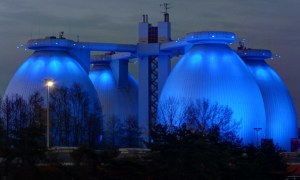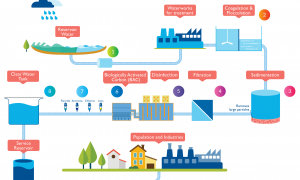🕑 Reading time: 1 minute
Water in all three forms—solid, liquid, or gas—is an extremely valuable resource for fulfilling the basic necessities of humans. Clean water is not just required for drinking but for sanitation purposes as well. Therefore, water supplied to our homes should be free from impurities, bacteria, and any harmful chemicals.
In order to meet these needs and demands, it becomes imperative for a modern society to plan and build suitable water supply schemes. To ensure a constant and reliable water supply, an engineer needs to plan and design a water supply system based on the required characteristics.
First and foremost, while planning for a water supply system, the total water demand of the society needs to be worked out. To meet this demand, it becomes essential to look for the closest water source in the vicinity of the city or town. If the available source is not sufficient to meet the demand, other distant and viable sources should be discovered. After all the possible sources are listed, they are evaluated on multiple parameters for finalizing the major source.
Contents:
1. Sources of Water
The sources of water can be broadly divided into two categories: surface sources and sub-surface sources.
1.1 Surface Sources
As the name suggests, in the surface sources, the water flows over the earth’s surface and is immediately available for water supply.
1.1.1 Lakes and Ponds
A pond or lake is formed when a natural depression of a large size on the surface gets filled with water. The depression of a lake is more compared to a pond.
1.1.2 Streams and Rivers
Streams are channels that feed water to rivers or lakes. Large streams can be used as a source of water by using barrages or by providing storage reservoirs. Rivers are known to be an important source for public water supply systems.
1.1.3 Impounding Reservoirs
Impounding reservoirs (storage reservoirs) are pools or artificial lakes that are made by barricading rivers or streams.
1.2 Sub-surface or Underground Sources
Water that gets stored beneath the surface of the ground through infiltration and other processes is known as underground water. Underground water is generally pure and free from bacteria to a great extent but may have salts and minerals in it.
Through natural processes such as springs, the groundwater is brought to the surface. Groundwater can also be tapped using artificial methods such as constructing wells, infiltration galleries, etc.
2. Factors for Selecting Water Source
The following factors are taken into consideration while selecting a source of water supply to a town or city:
2.1 Quantity of Water
The quantity of water at the source should be adequate to meet all the demands of the design population for the entire design period of the scheme. In certain cases, the water source is mobilized to meet the present-day demand, and as time passes, extra units can be added. As mentioned earlier, in case the quantity of water is not sufficient, distant sources of water should be considered.
2.2 Quality of Water
The water of the source should be free from poisonous and toxic substances. The level of impurities in the water should be as low as to be screened out using normal treatment methods at a reasonable price.
2.3 Distance of the Source of Supply
The source of supply must be as close as possible to the point of delivery. If the distance is less, it will help in reducing the overall cost of the project as small-sized pipes would be used, and the number of appurtenances required would also be less.
2.4 Topography of Surrounding Area
The land between the source of supply and the city/society shouldn’t have high mountains, deep valleys, or ridges. In other words, the surface shouldn’t be highly uneven as uneven topographies would require tunnels to be constructed or a greater number of trestles for supporting the water pipes. This will increase the overall cost.
2.5 Elevation of Water Source
The water source must be on a higher elevation as compared to the town or city. This would facilitate gravity flow of water. When the water sources are at a lower level, equipment like pumps have to be used. This would increase operational and maintenance costs.
FAQs
Water sources can either be surface water sources such as lakes, ponds, rivers, etc. or subsurface/underground sources.
The total water demand and a water source adequate to meet the demand must be configured while planning a water supply scheme.
The quantity and quality of water available, the distance and elevation of the source, and the topography of the surrounding area are to be considered while selecting a particular source of water.
Read More



